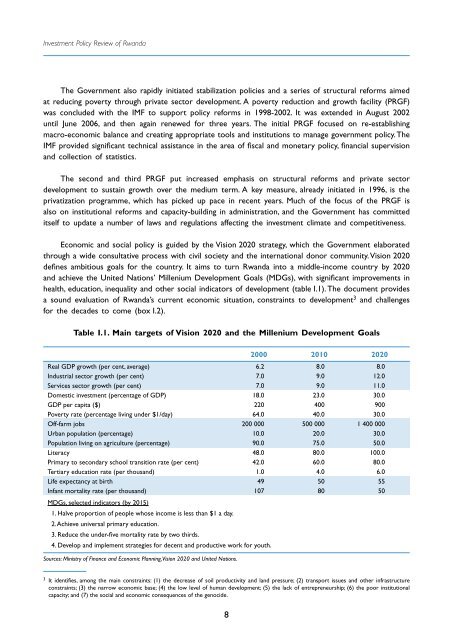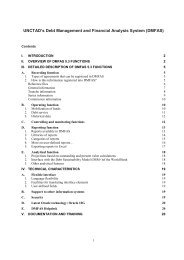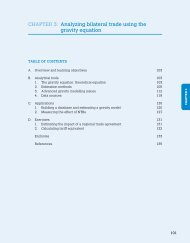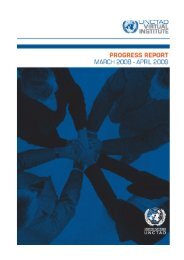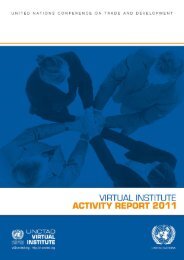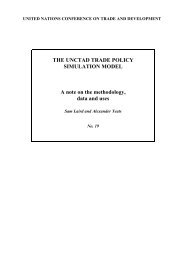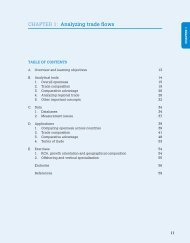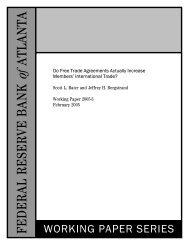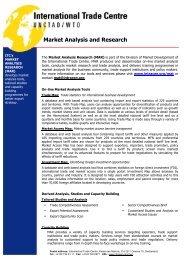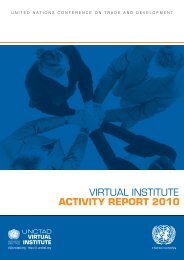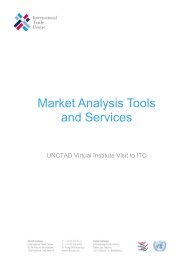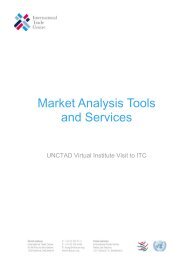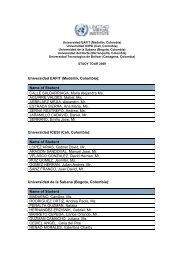Investment Policy Review - Rwanda - UNCTAD Virtual Institute
Investment Policy Review - Rwanda - UNCTAD Virtual Institute
Investment Policy Review - Rwanda - UNCTAD Virtual Institute
Create successful ePaper yourself
Turn your PDF publications into a flip-book with our unique Google optimized e-Paper software.
<strong>Investment</strong> <strong>Policy</strong> <strong>Review</strong> of <strong>Rwanda</strong><br />
The Government also rapidly initiated stabilization policies and a series of structural reforms aimed<br />
at reducing poverty through private sector development. A poverty reduction and growth facility (PRGF)<br />
was concluded with the IMF to support policy reforms in 1998-2002. It was extended in August 2002<br />
until June 2006, and then again renewed for three years. The initial PRGF focused on re-establishing<br />
macro-economic balance and creating appropriate tools and institutions to manage government policy. The<br />
IMF provided significant technical assistance in the area of fiscal and monetary policy, financial supervision<br />
and collection of statistics.<br />
The second and third PRGF put increased emphasis on structural reforms and private sector<br />
development to sustain growth over the medium term. A key measure, already initiated in 1996, is the<br />
privatization programme, which has picked up pace in recent years. Much of the focus of the PRGF is<br />
also on institutional reforms and capacity-building in administration, and the Government has committed<br />
itself to update a number of laws and regulations affecting the investment climate and competitiveness.<br />
Economic and social policy is guided by the Vision 2020 strategy, which the Government elaborated<br />
through a wide consultative process with civil society and the international donor community. Vision 2020<br />
defines ambitious goals for the country. It aims to turn <strong>Rwanda</strong> into a middle-income country by 2020<br />
and achieve the United Nations’ Millenium Development Goals (MDGs), with significant improvements in<br />
health, education, inequality and other social indicators of development (table I.1). The document provides<br />
a sound evaluation of <strong>Rwanda</strong>’s current economic situation, constraints to development 3 and challenges<br />
for the decades to come (box I.2).<br />
Table I.1. Main targets of Vision 2020 and the Millenium Development Goals<br />
2000 2010 2020<br />
Real GDP growth (per cent, average) 6.2 8.0 8.0<br />
Industrial sector growth (per cent) 7.0 9.0 12.0<br />
Services sector growth (per cent) 7.0 9.0 11.0<br />
Domestic investment (percentage of GDP) 18.0 23.0 30.0<br />
GDP per capita ($) 220 400 900<br />
Poverty rate (percentage living under $1/day) 64.0 40.0 30.0<br />
Off-farm jobs 200 000 500 000 1 400 000<br />
Urban population (percentage) 10.0 20.0 30.0<br />
Population living on agriculture (percentage) 90.0 75.0 50.0<br />
Literacy 48.0 80.0 100.0<br />
Primary to secondary school transition rate (per cent) 42.0 60.0 80.0<br />
Tertiary education rate (per thousand) 1.0 4.0 6.0<br />
Life expectancy at birth 49 50 55<br />
Infant mortality rate (per thousand) 107 80 50<br />
MDGs, selected indicators (by 2015)<br />
1. Halve proportion of people whose income is less than $1 a day.<br />
2. Achieve universal primary education.<br />
3. Reduce the under-five mortality rate by two thirds.<br />
4. Develop and implement strategies for decent and productive work for youth.<br />
Sources: Ministry of Finance and Economic Planning, Vision 2020 and United Nations.<br />
3<br />
It identifies, among the main constraints: (1) the decrease of soil productivity and land pressure; (2) transport issues and other infrastructure<br />
constraints; (3) the narrow economic base; (4) the low level of human development; (5) the lack of entrepreneurship; (6) the poor institutional<br />
capacity; and (7) the social and economic consequences of the genocide.<br />
8


